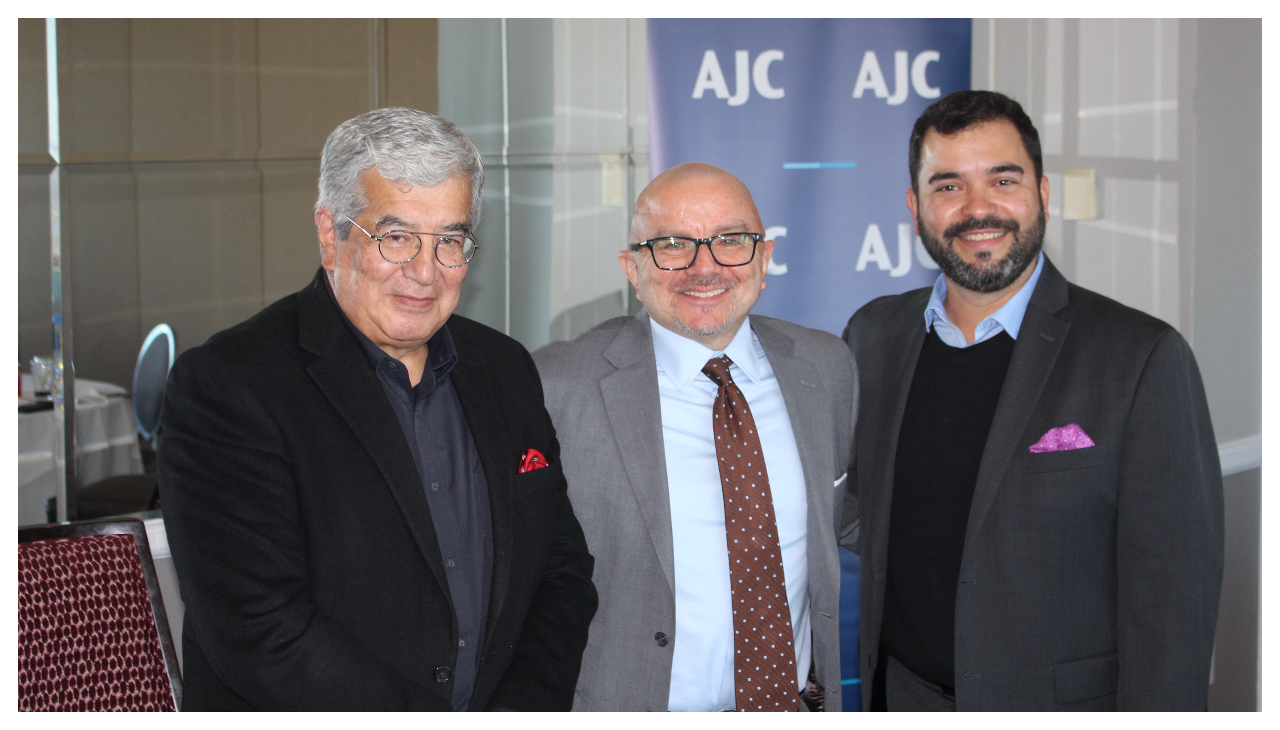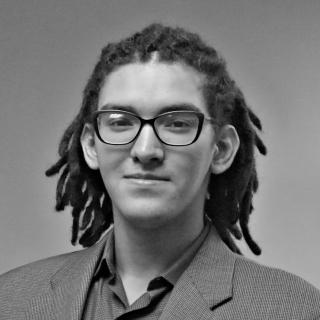
The shared politics, goals, and barriers of the Latino and Jewish communities
AJC hosted a meeting with several prominent figures who gave speeches on the position of the Latino vote and a panel discussion for members of the audience.
In a symposium held to foster discussions between leaders of the Jewish community and the Latino community, the American Jewish Committee (AJC) held a meeting on Oct. 27 in Philadelphia, hosting several politically experienced speakers to discuss the mutual goals the two communities held.
Standing as keynote speaker was Larry Gonzalez, head of the Raben Group, who holds experience with policy making in both federal and state levels, working with Latino communities and Latino members of Congress.
His keynote speech centered on the political relationships between Latinos and Jews; what conversations they were and were not having, and how both communities can come together.
Gonzalez spoke of his youth, growing up in Chicago where the only people he knew were other Mexican-Americans. But as he grew beyond his neighborhood he realized the value and importance places had to ideals and community experiences.
In 2006, Gonzalez was a part of AJC’s Project Interchange, travelling to Israel to learn more about the country and its people. He viewed his time there as a firsthand experience, putting a face to something he had heard much about.
There, he found commonality in their shared immigrant experience, his time in Israel being “very profound for [him],” he said.
As the logistics of having the 62.5 million Latinos in the U.S. are highly improbable, Gonzalez is determined to share his experience as he advocates for further Jewish-Latino relations, using his personal experiences as a point of connection.
But Gonzalez wants to further connections between the two communities. He had seen the Jewish community reach out with aid to Latinos after a shooting in El Paso in 2019, and had spoken in discussions with Latino leaders for how to create these bonds.
But even then Gonzalez knew that the solution was far from done, seeking answers to how to bring the two communities together.
What of the Latino vote?
But as Gonzalez seeks answers among Latino leaders, political consultant Fernando Treviño spoke on how Latinos sought to play their votes and sway political matters.
Treviño used Pennsylvania as an example of how the Latino vote has been impactful in many presidential elections, like in Obama’s second election in 2012 where the state was decided by 5.7%; the Latino vote totalling 6% of voters.
However in the latest election, the Latino vote declined to 5%. While seemingly small, for a growing population these declines can foreshadow greater impact on future elections.
However, another trend Treviño noticed was the disincentivization of Latinos to vote by Republicans due to Latinos more frequently agreeing with Democrat ideals, meaning the weakening of the Latino vote could mean gains for the party.
A mistake many people make, Treviño said, was presuming what Latino voters were concerned about each election season. While immigration is certainly a concern, it falls to the wayside in the face of more immediate issues, such as an impending recession, rising inflation, and the Jan. 6 insurrection.
Both Republicans and Democrats are employing strategies to attract the Latino vote, each working in their own regard, such as Republicans printing political advertisements in Spanish that focused on public safety.
But by failing to address these issues, both sides could fail to attract the Latino vote, disincentivizing the growing bloc from participating politically.
Treviño made note to point out to any Democratic supporters that the party could no longer rely on an anti-immigration Republican on the ticket to win over Latino voters and that Republicans could earn the Jewish vote without radicalizing their voter base towards hatred.
RELATED CONTENT
These are each possible, but require that community leaders need to encourage political leaders to pursue the Jewish and Latino vote.
Questions from the audience
Gonzalez and Treviño were joined by Fernando Mendez, president at translation/interpretation company TransWord and an experienced member of the broadcast media industry.
Together, the three of them operated a panel discussion, fielding questions from audience members.
One of the first questions fielded towards the panel was whether or not the Latino community was becoming divided between older Latinos leaning Democratic and younger Latinos becoming Republican.
Treviño answered, stating that the Latino community was like any other demographic — like Jewish Americans, for example — with its own internal divisions, political standings, and contradicting opinions.
When they were asked how Latino media and Jewish media work to pull both communities together and educate each other on their issues, the first point brought up was by Mendez, who in turn asked how many Hispanics were working for these organizations that were in touch with the media.
Gonzalez advocated for the inclusion of journalists and other media figures, to provide them firsthand experiences so they could relate to and better understand what they were speaking on.
But just having journalists present wouldn't be enough. The topic of Jewish-Latino relations needed to rise above the day-to-day noise of news, it needed appeal and to change hearts and minds.
For where to find Latino leaders on a local level, Gonzalez replied that they were found in roles people didn’t always expect: as teachers, as members of local organizations, or as firefighters.
Even as organizations do community work, Treviño made clear that not every organization has the same impact everywhere it goes; that the Latino community is multifaceted, each with its own needs, each with its own leaders.











LEAVE A COMMENT: